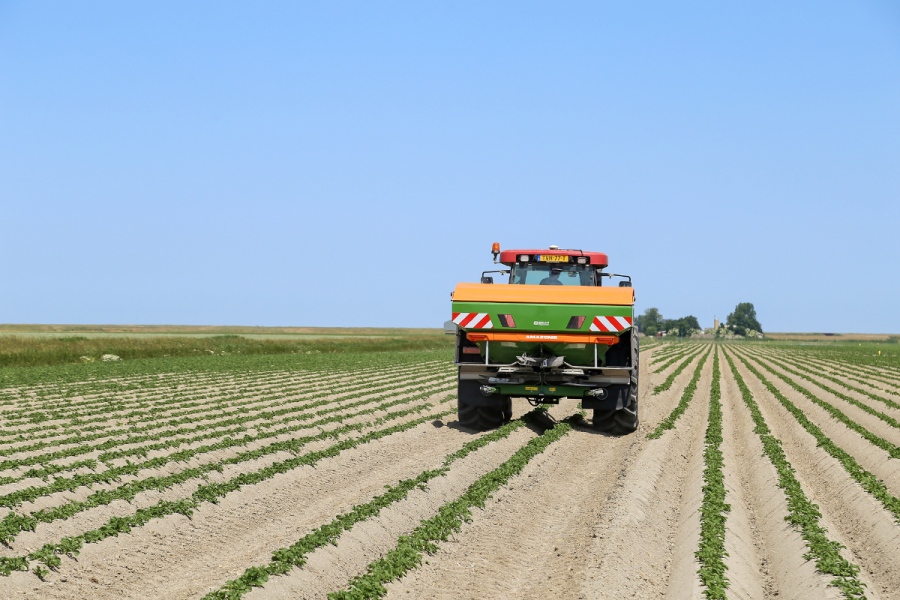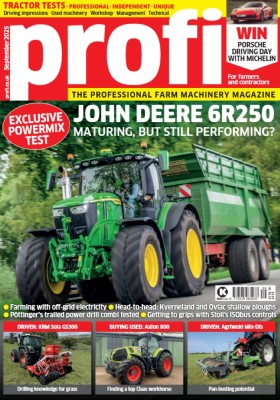REPORT: Dutch potato growers will often work with 45m tramlines, which is no easy task. We visited one grower in the polder area to discover how chucking fertiliser to such widths is possible.
Although tramline widths in the UK are mostly 24m or 36m for cereal and root crops, the Dutch like to go bigger, and that includes spreading solid fertiliser. In the polder area north of Groningen, 45m has become the standard width for potato and beet crops. We visited one such farm where manager Klaas Nienhuis shared his experiences.
Potatoes and beetroot
Located on the North Sea coastline, about one third of the 155ha polder farm is dedicated to potatoes and a further 23ha to sugar beet. Because of these crops, Klaus switched to 45m tramlines seven years ago. The average field size is around 10ha, the largest measuring 22ha. As soils can vary greatly in the polder area, Klaas usually divides up the fields into smaller plots. Some of the fields are very long — over 1,000m is common — but they’re often just 100 to 120 metres wides. Prior to buying a 45m wide sprayer, Klaus was operating a 39m machine. The change in boom width increased the amount of cropped area in the 22ha field by around 0.3ha — an important factor in the margin generated by the seed potato crop. There is also a handy efficiency gain, which shouldn’t be underestimated. For example, when the potatoes require spraying every five days or so, this usually takes place at night due to the wind conditions along the nearby North Sea coast. Klaas also prefers applying fertiliser at night: with less wind the application is more precise.
For more up-to-date farming news click here and subscribe now to profi and save.






